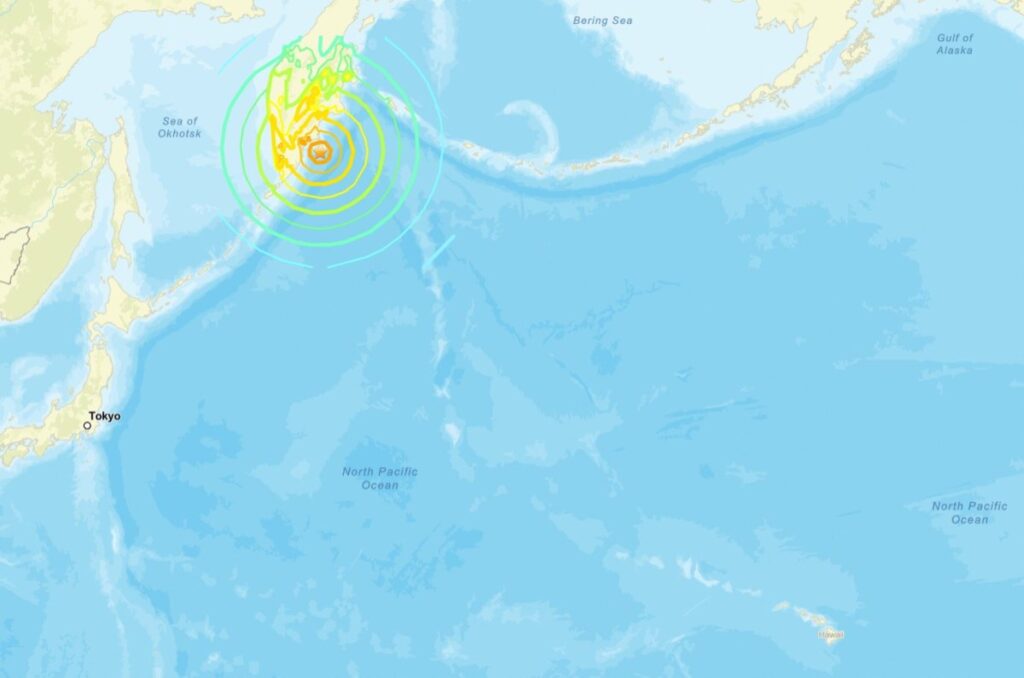
- ARAB NEWS
- 31 Jul 2025

TOKYO: The entire east coast of Japan and many of its smaller islands was placed under a tsunami alert following an 8.8 magnitude earthquake in eastern Russia on Thursday.
Six hours after the earthquake, the highest tsunami was 60 centimeters, but national broadcaster NHK was warning that subsequent waves could be higher, noting that after a quake in 1952 the highest waves occurred 10 hours after the quake and waves could continue arriving a day after the quake.
By noon, a tsunami of 50 centimeters was also observed in the city of Ishinomaki in the northeastern prefecture of Miyagi, and 40-centimeter tsunamis in Aomori Prefecture, Fukushima Prefecture, and Ibaraki Prefecture, according to the Japan Meteorological Agency.
According to the Fire and Disaster Management Agency (FDMA), as of 11:30 a.m., Urakawa Town in Hokkaido issued a Level 5 emergency safety warning for 4,982 households and 10,463 people within the town, indicating that a disaster has occurred or is imminent.
Additionally, 143 municipalities, primarily in 21 prefectures and prefectures along the Pacific coast, have issued Level 4 evacuation orders, requiring 430,705 households and 906,414 people to evacuate from dangerous areas.
The initial yellow advisory notice was upgraded to a red evacuation warning mid-morning. A red warning predicts possible tsunamis of up to 3 meters, which can cause considerable damage to coastal areas.
Prime Minister ISHIBA Shigeru said the government had established an information communication office at the Crisis Management Center of the Prime Minister’s Office at 8:37 a.m. after the earthquake occurred.
“At 9:43 a.m., I provided information to the residents of Hokkaido regarding tsunamis and evacuations, ensuring timely and accurate information was shared,” Ishiba said. “I instructed a thorough implementation of measures to prevent damage and an urgent assessment of the damage situation.”
There is an ongoing assessment of risk and damage and Ishiba asked those in the warning areas to evacuate immediately to safe places.
Chief Cabinet Secretary Hayashi echoed the prime minister’s words and warned that even if an initial tsunami has arrived, subsequent waves may be larger and could impact coastal areas.
“Please pay close attention to tsunami-related information and do not leave your safe location until the warning is lifted,” he added.
The tsunami warning applies to a wide range of areas including the Pacific coast of Hokkaido, the Pacific coast of Aomori Prefecture, Iwate Prefecture, Miyagi Prefecture, Fukushima Prefecture, Ibaraki Prefecture, Chiba Prefecture, the Izu Islands, the Ogasawara Islands, Sagami Bay, the Miura Peninsula, Shizuoka Prefecture, Aichi Prefecture, the outer sea, the southern Mie Prefecture, and Wakayama Prefecture.
The earthquake occurred around 8:30 and the first wave was expected to reach areas like Nemuro in Hokkaido or parts of Hokuriku around 10 a.m.